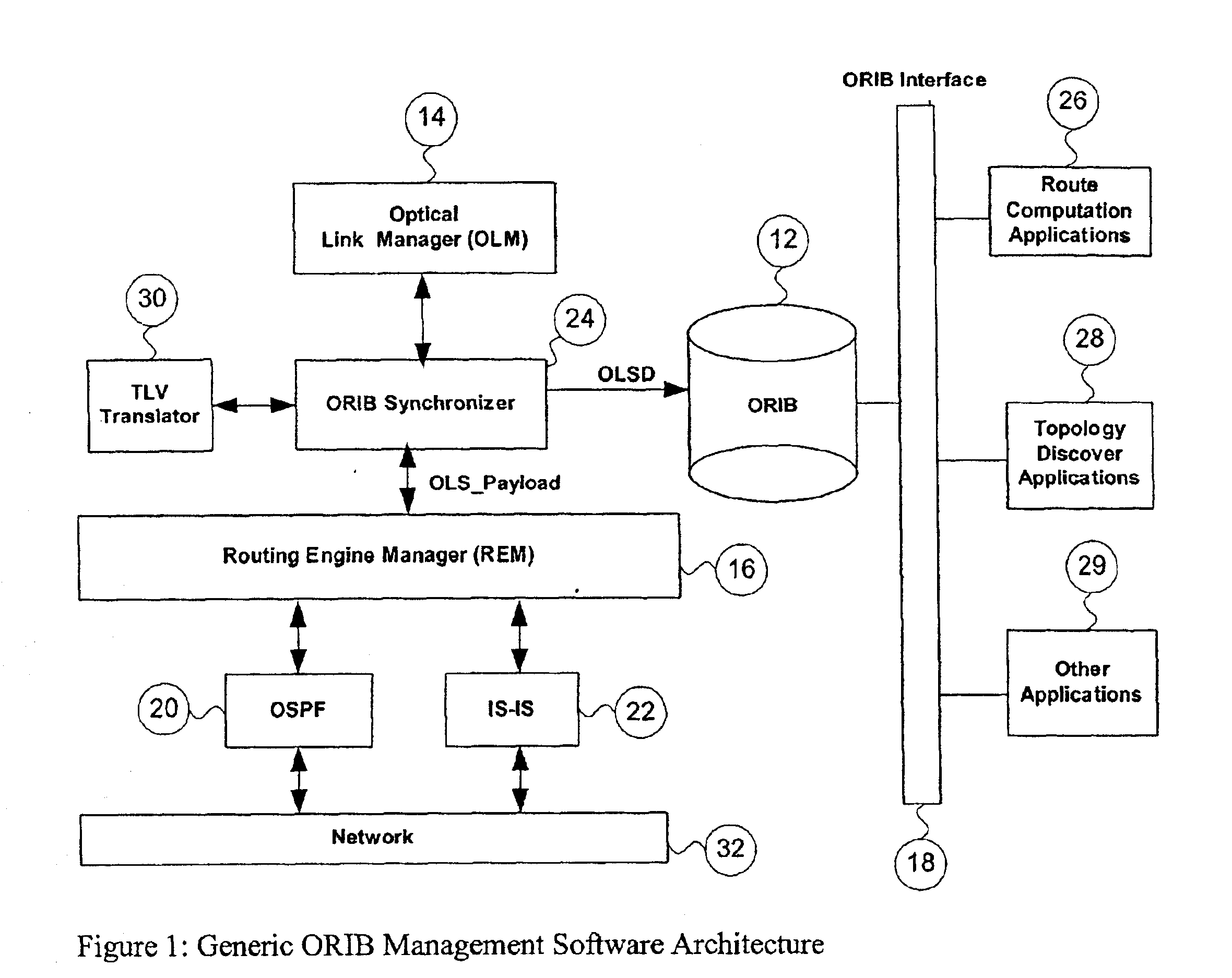Generic optical routing information base support
a technology of information base and generic optical routing, applied in the field of communication systems, can solve the problems of ols information flooding the routing space, inability to understand the information conveyed by the tlvs by the protocol, and inability to provide a single source of information,
- Summary
- Abstract
- Description
- Claims
- Application Information
AI Technical Summary
Benefits of technology
Problems solved by technology
Method used
Image
Examples
example 1
OSPF Receives an Opaque LSA
[0024]When the underlying OSPF routing engine receives an opaque LSA from the network, it checks the integrity of the LSA, and stores it in its own LSDB (Link State Database). It then sends a notification to the REM telling it that an opaque LSA has been received. The notification contains the generic OLS_payload data structure constructed from the LSA, and an index that points to the LSA in the OSPF LSDB. The REM forwards the notification to the ORIB Synchronizer, which checks the ORIB for the index of the LSA and determines whether this LSA already exists.
[0025]If the LSA already exists, then it needs to be updated. First, the ORIB Synchronizer locks the LSA in the ORIB so that the other applications cannot access it. Then the ORIB Synchronizer extracts the top level TLV from OLS_payload, and requests the TLV translator to translate it into an OLSD structure with the top-level values filled in. If the translation is successful, the ORIB Synchronizer extr...
example 2
Propagating a Newly Created Optical Link
[0027]Suppose that a new optical link is created by the OLM. The OLM informs the ORIB Synchronizer of the creation of the new optical link by passing an OLSD structure with the index fields set to NULL. The ORIB then asks the TLV translator to translate the OLSD into TLVs. If the translation is successful, the ORIB Synchronizer creates a new OLS_payload data structure, and requests the REM to flood it into the network.
[0028]After receipt of the request, the REM will create an opaque LSA from the OLS_payload data, and ask the underlying routing engine to install it into its LSDB. The REM first launches the OSPF flooding procedure to propagate the new LSA into the network, then, it sends a notification to the ORIB Synchronizer to inform it that an LSA has been received. The ORIB Synchronizer then starts the ORIB synchronization procedure described in Example 1.
PUM
 Login to View More
Login to View More Abstract
Description
Claims
Application Information
 Login to View More
Login to View More - R&D
- Intellectual Property
- Life Sciences
- Materials
- Tech Scout
- Unparalleled Data Quality
- Higher Quality Content
- 60% Fewer Hallucinations
Browse by: Latest US Patents, China's latest patents, Technical Efficacy Thesaurus, Application Domain, Technology Topic, Popular Technical Reports.
© 2025 PatSnap. All rights reserved.Legal|Privacy policy|Modern Slavery Act Transparency Statement|Sitemap|About US| Contact US: help@patsnap.com


